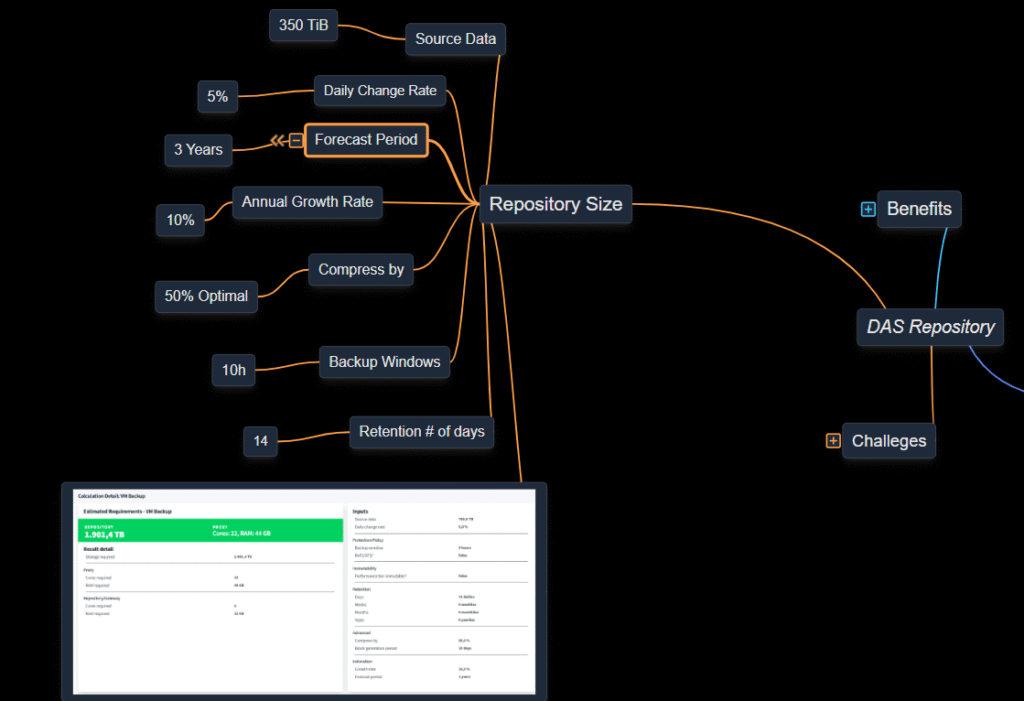What motivated me to create this document is knowing that countless students only consider the repository’s capacity; they end up not considering performance, logical and physical security, scalability, and more.
Once you understand how much work it is to build your own repository, you’ll realize that in many cases, the best alternative is to purchase a ready-to-use appliance, such as Object First’s backup storage. Everything comes pre-built and designed for security, performance, immutability, scalability, etc., and most importantly, optimized for the Veeam Backup & Replication solution.
What you should consider when considering using a repository to host your backups with the Veeam Backup & Replication solution.
The general idea, how some elements of a server, disk, and RAID controller work, will help you understand how to configure your DAS repository with your server’s internal disks.
To better visualize this document, I used mind mapping software. I’ll provide the link and the file so you can open and navigate the mind map.
I’ll start with a generic mind map, and as the map develops, I’ll update it as needed.
For this scenario, I will consider using only the repository component, no other components will be taken into consideration.

In this first image, you can see the relationship between the DAS repository, Server, Repository Size, Benefits and Challenge

Throughout this post, I will insert details for each of the items, such as server, expanding the server item, you will find boxes for CPU Sockets, Memory DIMM, RAID Controller, Network Card, File system, each box is also expandable, for example in the RAID Controller box, I will include information about RAID Level, Types of storage devices, write cache memory, stripes, stripe size, mechanical components, rotation latency, seek time, etc.

In the figure above, I include a simple calculation using the Veeam Calculator https://www.veeam.com/calculators , this calculation will be used as a reference only, I did not consider block clone technology, capacity tier, etc. It is just a sample of what should be minimally included in the calculation.

I will also provide important information regarding the benefits and challenges of using the DAS repository.
I just started this document, I’ll try to make weekly updates so I can give you the full picture.
Until the next update. 🙂